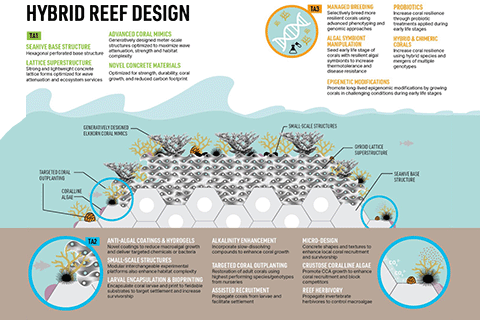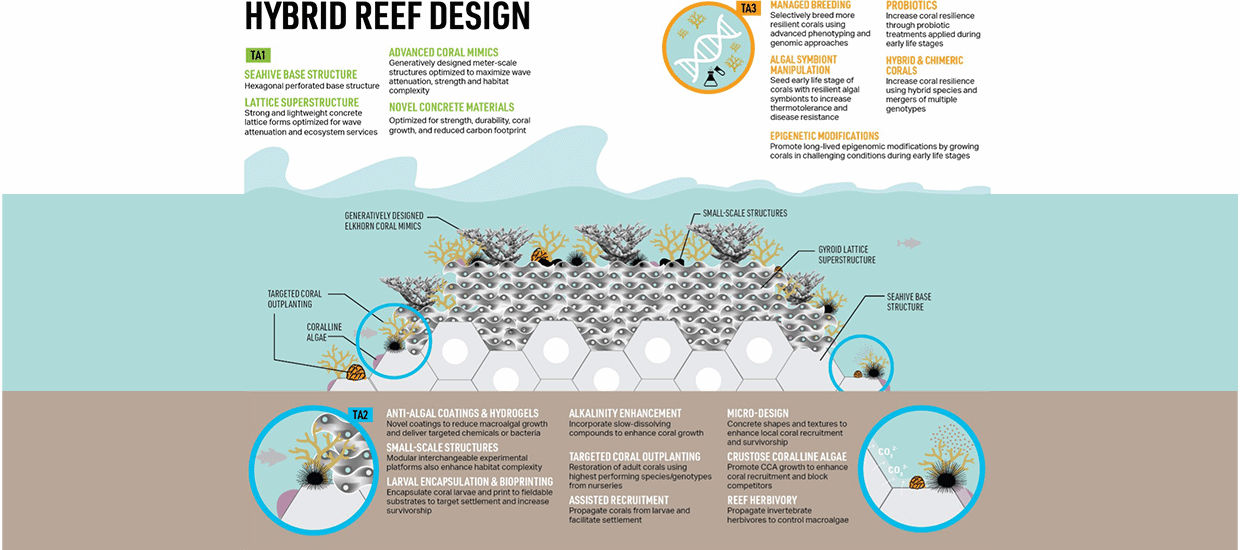The goal of the X-REEFS project is to develop an innovative hybrid biological and engineered reef-mimicking structure, with resilient ecological properties designed to survive changing environmental conditions. We are developing biocompatible, wave-attenuating structures that promote rapid growth of corals and build reef resilience by increasing coral resistance to thermal stress and disease to withstand future changes.
By bringing together specialists in structural engineering, physical and chemical oceanography, reef ecology and restoration, and adaptive biology, the X-REEFS project is creating a hybrid reef-like structure that will significantly reduce risk to communities and DoD installations in coastal areas, reduce maintenance costs, promote ecosystem health, and strengthen DoD’s ability to maintain its infrastructure and military readiness.





